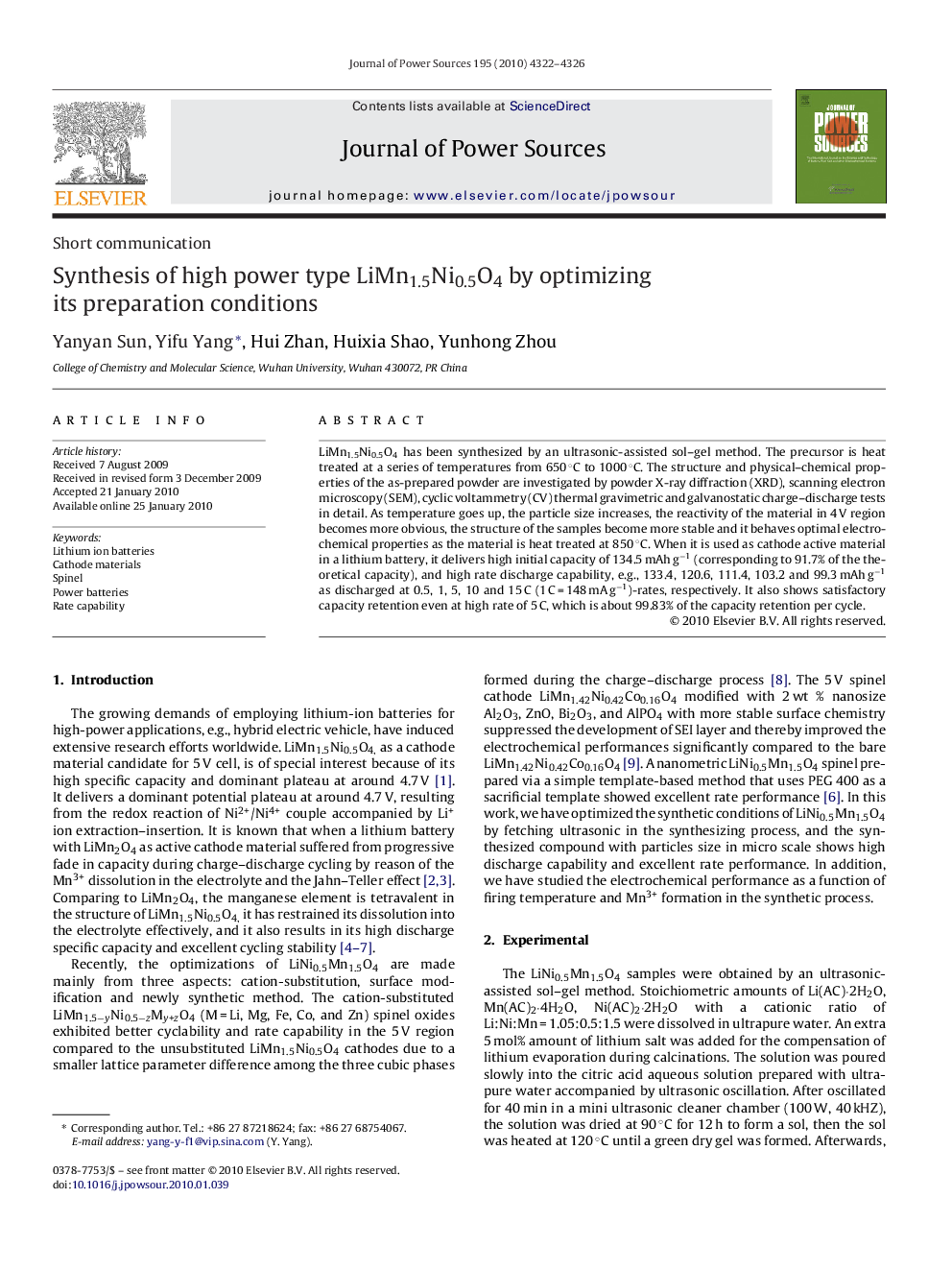| Article ID | Journal | Published Year | Pages | File Type |
|---|---|---|---|---|
| 1290367 | Journal of Power Sources | 2010 | 5 Pages |
LiMn1.5Ni0.5O4 has been synthesized by an ultrasonic-assisted sol–gel method. The precursor is heat treated at a series of temperatures from 650 °C to 1000 °C. The structure and physical–chemical properties of the as-prepared powder are investigated by powder X-ray diffraction (XRD), scanning electron microscopy (SEM), cyclic voltammetry (CV) thermal gravimetric and galvanostatic charge–discharge tests in detail. As temperature goes up, the particle size increases, the reactivity of the material in 4 V region becomes more obvious, the structure of the samples become more stable and it behaves optimal electrochemical properties as the material is heat treated at 850 °C. When it is used as cathode active material in a lithium battery, it delivers high initial capacity of 134.5 mAh g−1 (corresponding to 91.7% of the theoretical capacity), and high rate discharge capability, e.g., 133.4, 120.6, 111.4, 103.2 and 99.3 mAh g−1 as discharged at 0.5, 1, 5, 10 and 15 C (1 C = 148 mA g−1)-rates, respectively. It also shows satisfactory capacity retention even at high rate of 5 C, which is about 99.83% of the capacity retention per cycle.
